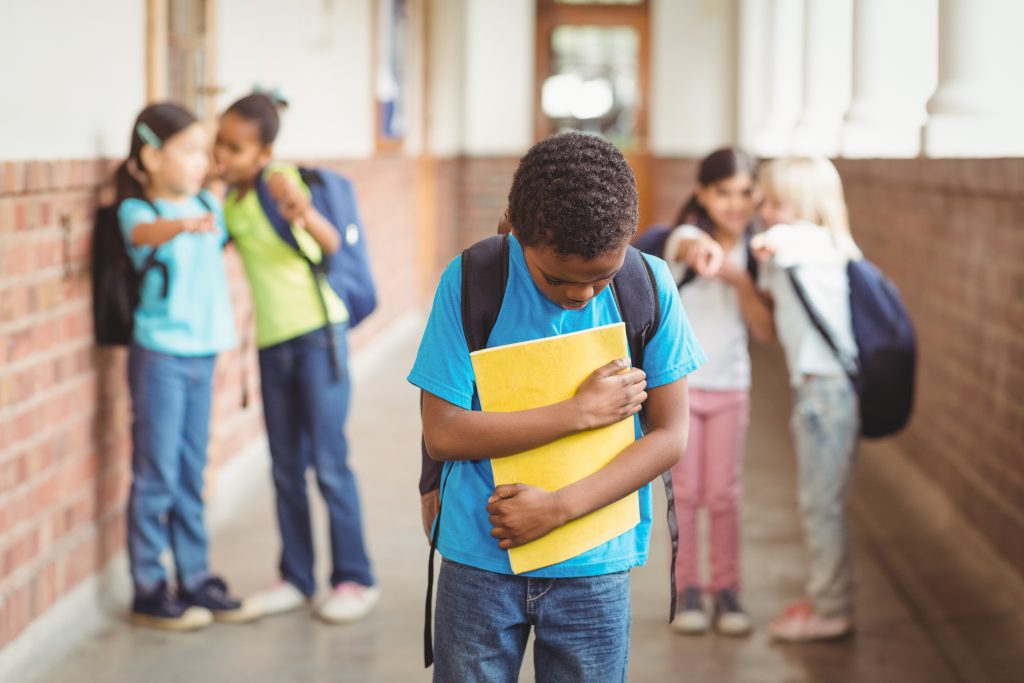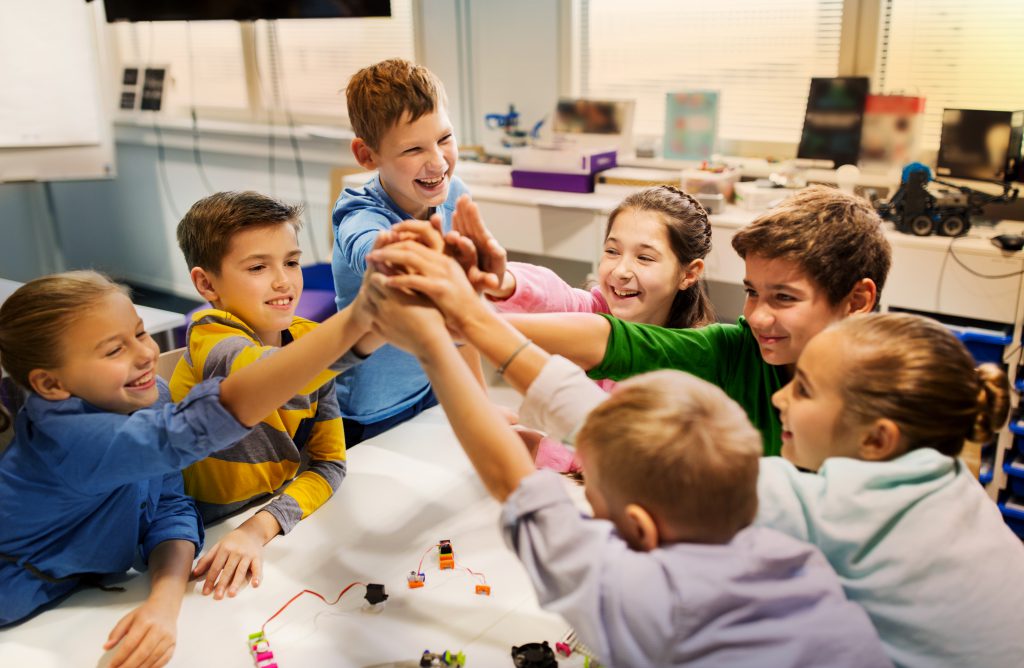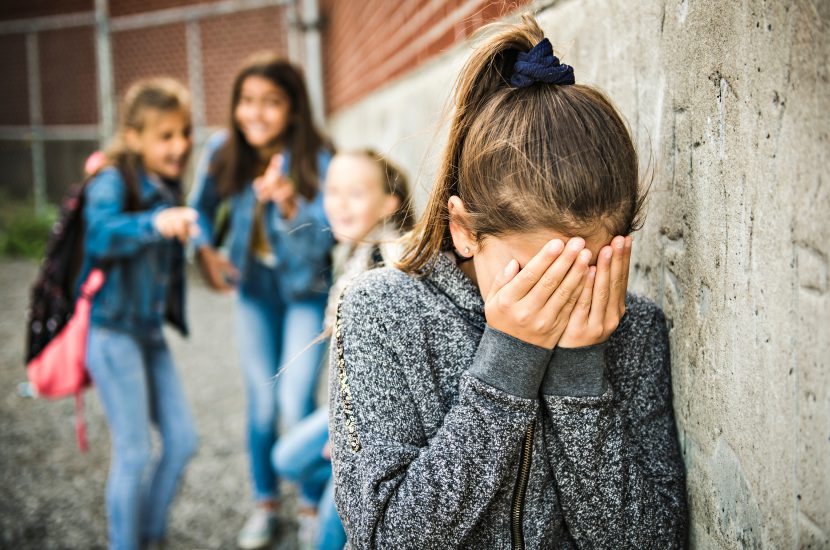Bullying is a long-lasting and, sadly, widespread problem. It is characterized by violent behaviors, both physically and mentally, towards subjects considered easy targets. Commonly the term ‘bullying’ is used to talk about the phenomenon in the school environment, when the average age is adolescence. With the emergence of social networks and, more generally, the increased online presence of children and adolescents, behavioral issues such as bullying have transferred, spread and adapted to this new virtual world.
Bullying in Schools
Bullying in schools is a dramatic, long-standing and widespread concern all over the world. There is the urgent need to raise global awareness already in order to achieve the Sustainable Development Goals (SDGs), in particular SDG 4, which aims to ensure inclusive and equitable quality education and promote lifelong learning opportunities for all, and SDG 16, which points at promoting peaceful and inclusive societies.

Bullying in schools can take many forms, ranging from physical violence, sexual violence to mental violence and most often expressed through acts of intimidation and repression (Council of Europe, 2020). It is thoroughly reported that bullying is one of the most pervasive forms of school violence, affecting 1 in 3 young people. A recent UNESCO report revealed that more than 30% of the world’s students have been victims of bullying. (UNESCO, 2020).
How Does Bullying Affect Children?
Bullying deprives children and young people of their fundamental right to education and of their right to learn in a safe, unthreatening environment. Indeed, schools cannot fulfil their role as places of secured learning and socialization if children are not in an environment free of violence. On the contrary, an atmosphere of anxiety, fear and insecurity and the feeling of being an outsider can undermine the quality of education for all learners (Unicef, 2020)
It is clear that bullying has several devastating consequences for the victims, affecting directly the academic achievements, school dropouts, future education, employment prospects, physical and mental health. A recent UNESCO report shows how the overall quality of life and risk behaviors of children victims of bullying is negatively affected (UNESCO, 2020). Indeed, bullying is also associated with higher rates of smoking, alcohol, cannabis use, and earlier sexual experience.
Perpetrators of Bullying in Schools
Mostly perpetrated by peers, evidence reveals that children who are perceived to be “different” in any way are more at risk. Key factors include physical appearance, ethnic, linguistic or cultural background, gender, including not conforming to gender norms and stereotypes, social status and disability.
A recent study entitled “There’s a Global School Sexual Violence Crisis and We Don’t Know Enough About It” highlights how sexual violence in schools does not seem to be a top priority for the global education aid architecture despite the increasingly worrying number of victims (Center for Global Development, 2020). And this is not just a problem in the developing countries.
Humanium just like many other humanitarian organizations do indeed consider bullying and sexual exploitation to be a violation of human rights because it damages the dignity of those who suffer from it and is contrary to fundamental principles such as inclusion, participation and non-discrimination. Article 2 of the Universal Declaration of Human Rights indeed affirms that everyone should be able to enjoy the rights and freedoms set forth in the Declaration “without distinction of any kind, such as race, color, sex, language, religion, political or other opinion, national or social origin, property, birth or other status.” The possibility to enjoy one’s rights without discrimination is one of the fundamental principles underlying international law and appears in almost all the most important legal instruments on human rights (Committee on the Rights of the Child, 2020).
New Dangerous Reality – Virtual Bullying
Data from seven countries in Europe show that the proportion of children aged 11-16 years who use the Internet and who had experienced to be bullied virtually (also ‘cyberbullying’) increased from 7% in 2010 to 12% in 2014 (Unicef, 2020).
Moreover, the UN organization attributed a greater increase due to the COVID-19 pandemic, as more students than ever are living, learning and socializing online. This had led to an “unprecedented increase in screen time and the merging of online and offline worlds”, heightening youngsters’ vulnerability to bullying and cyberbullying (UN News, 2020).

Offensive name-calling and the spreading of false rumors are the most common forms of cyberbullying and 37% of middle and high school students report having been cyberbullied during their lifetime (Security.org, 2020). Anti-bullying organizations and campaigns aim to educate and empower people to prevent and handle cyberbullying, but the overall feeling from today’s youth is that more should be done by the social media companies and our elected officials (Security.org, 2020).
The Council of Europe has launched a new handbook for policy makers on the rights of the child in the digital environment including support to policy makers in dealing concretely with the online rights and protection of children. As 1 in 3 Internet users worldwide are children (Council of Europe, 2020), they represent a large group of digital citizens, which as a vulnerable category also face many risks online and can suffer from human rights violations.
Also, the United Nations have a deep concern about the issue. In fact, the Committee on the Rights of the Child is currently drafting the General Comment on Children’s Rights in relation to the digital environment, an indispensable tool for the protection of minors throughout the world. The Draft encompasses and reviews all the base elements of children’s rights through the lens of the digital environment: from protections from all forms of discrimination (art. 2) to the best interests of the child (art. 3), the right of access to information from the media (art. 17) and freedom of expression (art. 13), as well as the protection of children from all forms of violence (art. 19). (Draft UN General Comment, Children’s Rights in Relation to the Digital Environment, 2020)
How Can We Guarantee School Safety for Children?
Since states have an obligation, enshrined in international law, to protect children from violence, governments should urgently tackle education-related abuses. The United Nations Convention on the Rights of the Child guarantees the right for children to be free from violence, including “physical and mental violence, injury and abuse, neglect and negligent treatment, maltreatment or exploitation, including sexual abuse” (UNCRC, 1989).
Moreover, the case-law of the European Court of Human Rights (ECtHR) regarding violence against children clearly establishes that states have a positive duty to take effective measures to protect children from abuse. However, violence against children is still too often considered socially acceptable and tolerated in the world today. For example, as UNESCO noted, while starting with Poland in 1783, most of the countries abolished corporal punishment by 2016, but 67 countries still allow corporal punishment in schools, including parts of the United States, some Australian states, and a number of countries in Africa and Asia (Psychol Health Med, 2017).
Based on case studies of six countries that have succeeded in reducing school violence and bullying – Eswatini, Italy, Jamaica, Lebanon, Republic of Korea and Uruguay – and two countries that have maintained low levels over time – the Netherlands and Sweden – there are a number of factors that contribute to effective national responses.
These factors are:
- Political leadership and high-level commitment, together with a robust legal and policy framework
- Collaboration and partnerships, between the education sector and other sector ministries, civil society organizations, academic institutions, professional associations and the media (but also at school level, involving all stakeholders in the school community and promoting the meaningful participation of children in efforts to prevent and respond to school violence and bullying)
- Evidence-based approaches, informed by accurate and comprehensive data and systematic evaluation of the effectiveness of existing programs, establishing effective child-friendly and gender-sensitive reporting, complaint and counselling mechanisms and restorative approaches.
- Training and support for teachers and caregivers to prevent and respond to school violence and bullying, and care and support for affected students and positive classroom management, giving priority to children who are especially vulnerable, as a result of race, ethnicity, disability, gender or sexual orientation.
There are also a number of factors that can limit the effectiveness and impact of national responses. These include lack of data on specific aspects of school violence and bullying, and on the sub-groups of students who are most vulnerable, low coverage of interventions, and lack of systematic monitoring of school violence and bullying and of robust evaluation of the impact of programmes (UNICEF, 2020).

Humanium as an organization has proudly contributed to drafting the previously mentioned General Comment on children’s rights in relation to the digital environment, by submitting its very own proposal for a General Comment to the UN, in response to the UN’s call for NGO participation. If you want to support our further actions and projects so that international children’s rights laws can be considered with regards to the digital age, subscribe to our newsletter or become a member. Also, to support Humanium’s ongoing work and contribute to the implementation of children’s rights, consider making a donation or signing our petition, and join us in taking action for children’s rights worldwide.
Written by Federica Versea
Bibliography:
Council of Europe. (2020). Violence in schools. Retrieved from Council of Europe.
Council of Europe. (2020). Violence in schools. Retrieved from Council of Europe.
UNESCO. (2020). What you need to know about school violence and bullying. Retrieved from Unesco.
Unicef. (2020). Behind the numbers: ending school violence and bullying. Retrieved from Unicef.
Unicef. (2020). Behind the numbers: Ending school violence and bullying. Retrieved from Unicef.
UNICEF. (2020). Behind the numbers: Ending school violence and bullying. Retrieved from Unicef.


